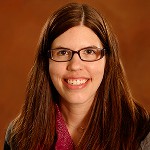Scholars of interpersonal communication utilize several theories to help explain and predict human interaction. One such theory, Uncertainty Reduction Theory, attempts to explain how human beings utilize communicative strategies to reduce uncertainty regarding other human beings. The theory suggests that human beings are uncomfortable with uncertainty and seek the means to predict the trajectory of social interactions. In attempting to reduce that uncertainty, people tend to utilize passive, active, and interactive strategies to help predict and explain someone’s behavior during an interaction.
A passive strategy might resemble observing someone from a distance – say a potential romantic interest at a bar – and determining information based upon those observations. A more active strategy might resemble the act of looking someone up online to access basic information provided on someone’s social media profile. An interactive strategy, then, might resemble a face-to-face interaction, where an exchange of basic information occurs, and uncertainty is reduced through this initial exchange.
History of Uncertainty Reduction Theory
Initially introduced in 1975 by Charles R. Berger and Richard J. Calabrese, Uncertainty Reduction Theory offered a “theoretical perspective for dealing with the initial entry stage of interpersonal interaction” in which uncertainty is common, and suggested a set of “research priorities” for future scholars to further test the theory. Within the initial entry stage of interpersonal interaction, an exchange of information regarding a person’s “sex, age, economic or social status, and other demographic” indicators typically occurs and is “controlled by communication rules and norms” (University of Twente, n.d.). Berger and Calabrese (1975) “initially presented [Uncertainty Reduction Theory] as a series of axioms,” or universal truths that typically do not require proof to be accepted, to “describe the relationships between uncertainty and several communication factors” in dyadic exchanges (University of Twente, n.d.).
Further research did indeed answer Berger and Calabrese’s (1975) research priorities and significantly expanded Uncertainty Reduction Theory’s explanatory power in areas such as verbal and nonverbal communication, intimacy, reciprocity, and information-seeking behavior. For example, assuming that the communicative interaction is in person and longer than a fleeting moment in a public space, Uncertainty Reduction Theory researchers suggest that people will use a “variety of sources when collecting information to reduce their uncertainty” (Floyd, 2017; Whaley & Samter, 2013).
Some of those sources may not be in the words being said, but rather in how one is saying something – as basic information is being exchanged, one may pick up on certain nonverbal cues like hand gestures, facial expressions, and accents (Floyd, 2017). In paying attention to nonverbal cues, we may learn more about another individual and further alleviate uncertainty, ultimately leading to a more intimate knowledge of the other person.
Spotlight on Scholarship - Featured Scholars in Uncertainty Reduction Theory and Interpersonal Communication
Learn more about how influential scholars of interpersonal communication have studied Uncertainty Reduction Theory in order to better understand relationship building and information management, and get a preview into the impact of their scholarship by reading our featured scholar profiles below.
Specializing in Interpersonal Communication, Uncertainty and Information Management, and Relational Communication, Dr. Afifi is the author of “over 70 articles, chapters, and books.” His research typically interrogates “uncertainty and information-management decisions,” which has “led to the development and refinement of the Theory of Motivated Information Management.” For more information on Dr. Afifi, visit his page at the UC Santa Barbara Department of Communication website.

As a truly world-renowned scholar, Dr. Beebe’s career boasts titles such as President of the National Communication Association (2013), and Department of Communication Chair, Regents’ and University Distinguished Professor, and Associate Dean of the College of Fine Arts at Texas State University. His research resume is just as distinguished – having authored and co-authored dozens of books and articles related to many facets of communication. For more information on Dr. Beebe, be sure to read the following interview.

Dr. Knobloch’s examines “how people communicate within close relationships.” “More specifically,” she writes on her University of Illinois bio page, “I examine how people's communication both shapes and reflects the ways they think about their relationships. I have focused on times of transition because individuals are more aware of their relationships when those relationships are in flux.” Dr. Knobloch is the recipient of many distinguished awards, including the Charles H. Woolbert Research Award at the 2018 National Communication Association Conference.

With her incredibly relevant and important research in Interpersonal & “Dark Side” Communication, Friendship and Peer Communication, and Sexual Communication, Dr. Lucas was awarded “an Early Career Grant from Central Michigan University for a project entitled, ‘Emerging Adults in College: The Role of Friends in Sexual Decision-Making’” in 2014. In 2016, she was awarded a Teaching Excellence Award at CMU. Dr. Lucas is currently Associate Director of Undergraduate Studies at Michigan State University.

“One line of (my) research,” Dr. Samter explains on her Bryant University bio page, “examines how individual differences in social cognition, beliefs about the role communication skills play in relationships, and skill performance influence a person’s ability to initiate and maintain successful interpersonal relationships.” Additionally, Dr. Samter’s research also interrogates “communication skills as a function of age, ethnicity, relationship type, and context,” and recently, she has undertaken research probing the “role of prayer and religion” in dealing with stressful situations.

Dr. Theiss’s research “focuses on the dynamics of interpersonal communication in the context of romantic relationships, marriages, and families.” According to her Rutgers University bio page, “she is interested in the ways that certain qualities of relationships shape communication between partners and, in turn, how interpersonal communication influences the development of close personal relationships.” Recently, Dr. Theiss began working to develop the “Relational Turbulence Model” that will help explore communicative behavior within relationships that are in a transitional phase.

In addition to teaching courses in “social influence, message design in health interaction, communication and disability, and experimental research methods,” Dr. Whaley researches “the relationship between language/message variables and social influence, linguistic and social cognitive factors related to illness explanation and compliance messages in health contexts,” and other facets within health communication. Dr. Whaley is currently the Director of Health Studies at the University of San Francisco.
Outside the Realm of the Interpersonal
While Uncertainty Reduction Theory largely pertains to interpersonal communicative contexts, the theory can also be applied to other situations as well. Dale Brashers (2007) highlighted Uncertainty Reduction Theory’s applicability in contexts ranging from picking a new restaurant to try, where we might consult online reviews to reduce our uncertainty, to material in a class, where we might ask the professor or a classmate to clarify information, to situations where our health and wellness is in doubt and we ask doctors and nurses questions in an effort to quell the anxiety associated with uncertainty (Whaley & Samter, 2013).
In addition to other scholars, Brashers (2007) helped to further expand the scope of Uncertainty Reduction Theory outside the traditional dyadic interpersonal exchange. Now, when instructors in Introduction to Human Communication courses talk about Uncertainty Reduction Theory in class, they tend to do so in grander terms – taking humanity’s discomfort with uncertainty as a basic tenant of what it means to be human.
Challenging Uncertainty Reduction Theory
Without question, Uncertainty Reduction Theory begins to answer questions regarding motivations behind human communication and the nuances that occur within initial communicative contact. However, leading communication researchers bring to the fore cultural and other interpersonal factors that complicate Uncertainty Reduction Theory’s explanatory power. Citing Michael Sunnafrank and his predicted outcome value theory, Floyd (2017) maintained that we ought to “consider the merits of what we learn about other people when forming opinions of them,” and always remember that learning more information about another person does not necessarily equate to liking them more.
Indeed, Sunnafrank’s predicted outcome value theory “suggests that when we dislike the information we learn about others, that information can cause us to like them less, not more” (Floyd, 2017). Additionally, cultural communicative tendencies further complicate Uncertainty Reduction Theory’s ability to explain human interaction as some cultures “accept uncertainty as a normal part of life, whereas others tend to avoid it whenever possible” (Floyd, 2017). While Uncertainty Reduction Theory may indeed be universal to the human experience, there are some notable caveats, and researchers have recently started to take into account Western bias in discussing culture and intercultural communication.
Uncertainty Reduction Theory Today
Even with an abundance of research about and related to Uncertainty Reduction Theory, interpersonal communication scholars continue to probe its intricacies and applicability. In writing the entry about Uncertainty Reduction Theory in The International Encyclopedia of Interpersonal Communication, Leanne K. Knoblach (2015) highlighted that recently “scholars have employed the theory to illuminate interpersonal contexts as diverse as initial interaction, social exchange processes, individual differences in uncertainty, established relationships, computer‐mediated communication, dyadic communication within organizations, and intercultural communication.” Within those contexts, there is ample space for great scholarship and room for Uncertainty Reduction Theory to grow.
Scholars & Readings in Uncertainty Reduction Theory
To that end, the following is a list of recent scholarship examining Uncertainty Reduction Theory. For a more comprehensive look into Uncertainty Reduction Theory – its history, past research, and researchers, see Mark V. Redmond’s (2015) chapter in the Iowa State University Digital Repository.
- Affifi, W. A. & Lucas, A. A. (2008). Information seeking in the initial stages of relational development. In S, Sprecher, A. Wenzel, & J. Harvey (Eds.), Handbook of relationship initiation (pp. 135-152). NY, NY: Psychology Press.
- Beebe, S. A., Beebe, S. J. & Redmond, M. V. (2014). Interpersonal communication: Relating to others, 7th ed. Boston, MA: Pearson Education Inc.
- Berger, C. R., (2011). From explanation to application. Journal of Applied Communication Research, 39, 214-222.
- Hogan, T. P. & Brashers, D. E. (2012). The theory of communication and uncertainty management: Implications from the wider realm of information behavior. In T. D. Afifi & W. A. Afifi (Eds.), Uncertainty, information management, and disclosure decisions (pp. 45-66). New York, NY: Routledge.
- Knobloch, L. K. & Satterlee, K. L. (2012). Relational uncertainty: Theory and application. In T. D. Afifi & W. A. Afifi (Eds.), Uncertainty, information management, and disclosure decisions (pp. 106-127). New York, NY: Routledge.
- Knobloch, L. K. & Theiss, J. A. (2011). Relational uncertainty and relationship talk within courtship: A longitudinal actor-partner dependence model. Communication Monographs, 78, 3-26.
Sources and Additional Resources
- Berger, C. R., & Calabrese, R. J. (1975). Some Explorations in Initial Interaction and Beyond: Toward a Developmental Theory of Interpersonal Communication. Human Communication Research, 1(2), 99–112. academic.oup.com/hcr/article-abstract/1/2/99/4637500
- Floyd, K. (2017). Human Communication: A Critical Reader (Third Edition). McGraw Hill Education LLC.
- Knobloch, L. K. (2015). Uncertainty Reduction Theory. In The International Encyclopedia of Interpersonal Communication (pp. 1–9). onlinelibrary.wiley.com/doi/abs/10.1002/9781118540190.wbeic144
- University of Twente. (n.d.). Interpersonal Communication and Relations | Uncertainty Reduction Theory. Retrieved from www.utwente.nl/
- Whaley, B. B., & Samter, W. (2013). Explaining Communication: Contemporary Theories and Exemplars. Routledge. www.taylorfrancis.com/books/edit/10.4324/9781410614308/explaining-communication-bryan-whaley-wendy-samter
Additional Topics on Research in Interpersonal Communication

This guide provides an introduction to the field of interpersonal communication, and outlines important theories in the field, including identity management theory, uncertainty reduction theory, and relational dialectics theory.


